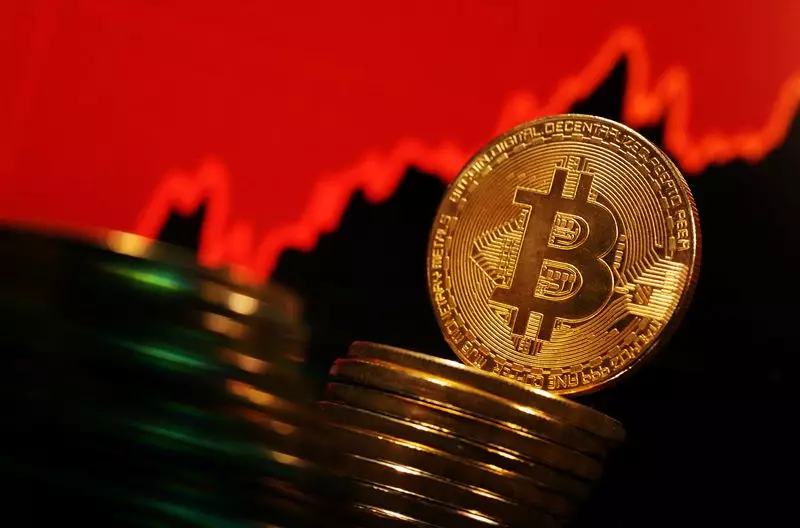The Dynamic Landscape of Bitcoin and U.S. Economic Sentiment

In recent financial weeks, Bitcoin has exhibited notable fluctuations, showcasing the cryptocurrency’s volatile nature. Following a significant surge that saw the price of Bitcoin reaching nearly $100,000, traders have recently engaged in profit-taking, resulting in a downward trend. However, as the market adapts to these changes, Bitcoin managed to rebound by 1.8%, settling at approximately $93,936. This recovery indicates that while some investors are cashing out, others see value in potential gains, leading to a brief respite in an otherwise declining market.
The period leading up to Bitcoin’s decline following its ascent was marked by heightened enthusiasm among investors. However, the inability to surpass the psychologically significant $100,000 barrier has left many feeling disillusioned, fostering a cautious atmosphere enveloping the market. This sentiment has been further exacerbated by geopolitical tensions, particularly as reports emerged regarding U.S. President-elect Donald Trump’s plans to impose additional tariffs on various nations. Concerns over a potential trade war further dampened risk appetite, instigating a wave of uncertainty that reverberates through the cryptocurrency markets.
The current focus among traders pivots toward an array of crucial economic data originating from the United States, which bears significant implications for future interest rate decisions by the Federal Reserve. Central to this observation is the upcoming release of the PCE Price Index, an essential metric for gauging inflation. Market participants await this data with bated breath, as it could heavily influence the Fed’s monetary policy strategy.
Moreover, the minutes from the Fed’s recent meeting revealed a divide among policymakers regarding the timeline and extent of potential rate cuts. The economic landscape appears more resilient than anticipated, challenging preconceived notions about immediate rate reductions. This backdrop could lead to increased volatility in the cryptocurrency space, especially given the sensitive interplay between interest rates and riskier asset classes like digital currencies.
Further complicating the outlook is the revised reading of the third-quarter gross domestic product (GDP). Should these reports showcase strong economic performance, it may allay fears of imminent rate cuts, potentially impacting investor sentiment across asset markets. Given Bitcoin’s correlation to broader economic indicators, such developments will undoubtedly affect trading patterns within the cryptocurrency sphere.
As the U.S. prepares for a transition in leadership, considerable attention is directed toward President-elect Trump’s stance on cryptocurrencies. His rhetoric surrounding the ambition of establishing the U.S. as the “crypto capital” suggests a potential opening for regulatory reforms and incentives for the digital asset economy. However, the market remains cautiously optimistic, awaiting more concrete policy directives.
Reports indicate that Trump may grant the Commodity Futures Trading Commission (CFTC) more authority to oversee crypto assets. This proposed shift could delineate the regulatory landscape by classifying Bitcoin and Ether as commodities, thereby potentially reducing the oversight role previously held by the Securities and Exchange Commission (SEC). Such structural changes could lead to increased operational clarity for cryptocurrency exchanges and trading platforms, albeit while navigating a dual-regulatory environment may introduce complexities for market participants.
With the outgoing SEC Chair, Gary Gensler, expected to resign on Trump’s inauguration day, it raises questions about the regulatory future of the cryptocurrency market. Gensler’s past advocacy for the CFTC’s oversight of Bitcoin suggests that changes in administration could herald a shift in regulatory philosophy, potentially offering a more accommodating environment for digital assets.
As Bitcoin’s recovery begins to influence alternative cryptocurrencies—often referred to as altcoins—it underscores the interconnectedness of this digital asset ecosystem. With Ethereum’s price surging by 5%, observing similar gains in other notable cryptos such as XRP and Solana, it is evident that the participation of Bitcoin stabilizes broader market confidence.
The ongoing developments within regulatory frameworks, combined with the overarching economic climate in the U.S., will undoubtedly shape the future trajectory of cryptocurrency investments. As traders and investors remain vigilant, the evolution of Bitcoin and its associated assets will be inextricably linked to both macroeconomic trends and the forthcoming policies from the impending Trump administration.
The cryptocurrency market stands at a critical juncture, where diverse influences are converging, setting the stage for potential growth amid uncertain conditions. With each passing day, strategic decisions made by both traders and policymakers will be pivotal in determining the future of Bitcoin and the broader digital asset market.





